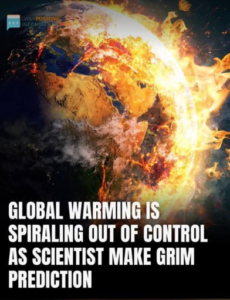A global temperature rise of 7°C above pre-industrial levels would represent an unprecedented shift in Earth’s climate, leading to severe and potentially irreversible impacts across natural and human systems. While current projections indicate that, under high greenhouse gas emission scenarios, global temperatures could increase by approximately 3.3°C to 5.7°C by 2100, a 7°C rise is considered an extreme and less likely outcome. World Resources Institute
Potential Impacts of a 7°C Temperature Increase:
-
Extreme Heat Events: Regions worldwide would experience unprecedented heatwaves, with temperatures surpassing critical thresholds for human health and agriculture. Such conditions could lead to increased mortality rates, reduced labor productivity, and challenges in food production.
-
Sea-Level Rise: Significant melting of polar ice sheets, particularly in Greenland and Antarctica, would contribute to substantial sea-level rise, inundating coastal cities and displacing millions of people.
-
Ecosystem Collapse: Many ecosystems would face collapse due to the rapid rate of change, with numerous species unable to adapt or migrate in time. Coral reefs, for example, would be severely affected by ocean acidification and warming waters.
-
Agricultural Disruption: Shifts in climate zones would render traditional agricultural lands unproductive, leading to food shortages and heightened competition for arable land. Changes in precipitation patterns could exacerbate droughts and floods, further challenging food security.
-
Water Scarcity: Altered precipitation patterns and the accelerated melting of glaciers would disrupt freshwater supplies, affecting billions who rely on these sources for drinking water and irrigation.
-
Increased Extreme Weather Events: The intensification of the water cycle would lead to more frequent and severe weather events, including hurricanes, typhoons, and heavy rainfall, causing widespread damage to infrastructure and ecosystems.
-
Economic and Social Disruption: The cumulative impacts on infrastructure, health, and livelihoods would strain economies, potentially leading to increased poverty, migration, and conflict over scarce resources.
Current Projections and Mitigation Efforts:
While a 7°C increase is considered extreme, current trajectories without significant mitigation efforts suggest substantial warming by the end of the century. The Intergovernmental Panel on Climate Change (IPCC) emphasizes that immediate, rapid, and large-scale reductions in greenhouse gas emissions are crucial to limit warming to 1.5°C or 2°C, thereby avoiding the most catastrophic outcomes. IPCC
Conclusion:
A 7°C rise in global temperatures would have catastrophic consequences for the planet and humanity. While current projections indicate lower levels of warming, the potential for such extreme scenarios underscores the urgency of global efforts to reduce greenhouse gas emissions and implement adaptive strategies. Proactive measures are essential to mitigate the risks associated with climate change and to ensure a sustainable future for all.
